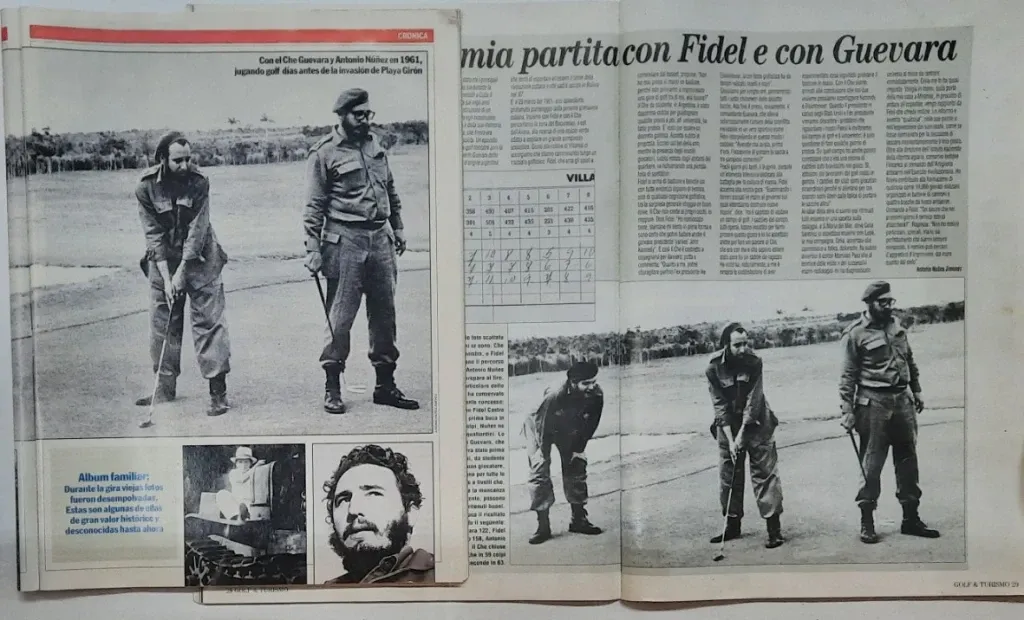Cuba on my mind
For columnist Robert Thurston, Cuba has been a consistent presence in his political awareness since the Bay of Pigs invasion in 1961.

My earliest political memory dates from the summer of 1959, when I was nine years old. Day after day, I sat in my family’s breakfast nook in our house outside Washington D.C., ate cereal and read the Washington Post: executions in Cuba.
What was going on? I don’t remember talking to anyone about the shootings. My parents both had PhDs, but they didn’t talk much about politics. How could a nine-year-old understand the Cuban Revolution? Who the heck was this guy Castro, and why did he always wear the same clothing?
April 1961, age 11. The Bay of Pigs invasion by counter-revolutionaries. Why did any country have a bay of pigs? Whose pigs? OK, our pigs. Why did the invasion fail miserably? What were the pigs fighting for — to return Cuba to American companies like the old AT&T so we could squeeze more money out of a poor island?
October 1962, age 13. I heard President Kennedy on the radio, announcing in his unmistakable voice a naval “quarantine” of Cuba, as the Russians were trying to install missiles there that could reach far into the U.S. If they fired nuclear weapons, D.C. would be vaporized. Funny, I don’t remember being scared. We learned much later that the Russians already had missiles in place in Cuba. In 1962, Nikita Khrushchev blinked, or everyone blinked, and the Cuban Missile Crisis ended.
November 1963, age 14: I waited in line for hours to file past Kennedy’s closed casket in the Capitol rotunda. Who could understand anything?
Over the years, stories emerged about our government’s efforts to assassinate Castro: poisoned cigars and wet suits, mafia hitmen, explosives. The CIA recruited one of Castro’s lovers to kill him with pills, or so the lover claimed. The Cubans counted hundreds of attempts. Wikipedia says over 600; who knows? Your tax dollars at work, on the theory that if we got the Big Leader, the whole deal would collapse. But with a few exceptions, that’s not how regimes work. Cuba has lumbered on despite Fidel’s death in 2016, age 90, and his brother Raul’s demise in 2021. Who leads the country now? Who cares?
October 1983: the U.S. invaded the tiny Caribbean Island of Grenada. President Reagan declared that “We got there just in time,” apparently to stave off the Red Menace in the form of Cuban construction workers building an airstrip.
1977-92: the Cubans sent armed forces to Mozambique to help a so-called socialist government. In the U.S., 500 people knew where Mozambique was — 400 of them worked for the government and were very nervous. Were the Soviets using Cubans as proxies in Africa? Were the Castros acting on their own, seeking allies in Africa and sending a special message of solidarity to Black Cubans? Many people died, then it all went away. No lessons learned.
2016: I know someone who served in the short-lived U.S. embassy in Havana, when President Obama tried to thaw relations between our countries. “Sonic attacks,” maybe insecticide, caused mental and physical problems for our staff in Havana. My acquaintance seems OK, but another American from the embassy will never work again. Something similar happened to Canadians in Cuba and to U.S. personnel in China. If the attacks were deliberate, who benefited?
December 2023: I went to Cuba on a cut-rate group trip, hoping above all to see American cars from the 1950s, running with improvised parts. Alas, few are left, and some look like baby tanks. The trip was to look at co-ops and small-scale agriculture. What we saw was not impressive. A guy who grows herbs in his yard; a women’s sewing co-op with ancient machines operated by foot treadles; a vegetable farm, run down, no machinery; a coffee farm, where I got a sample of severely over-roasted beans.
Cuba, various reports say, imports 80% or more of its food. Now, co-ops can lease land for decades from the government. But what will they use for capital? Comparing the productivity of a Midwest farm to output from hand labor in Cuba — no thanks.
Yet Cubans can get access to the Internet. People, including ballplayers, come and go easily; they send money home. Medical care is not bad, except that certain drugs are expensive or unavailable. Music is in the air. I saw vivid, energetic art. Race doesn’t seem to matter much; mixed groups and couples were everywhere (women’s status: uneven — what’s new?). Neighborhood watch groups appear to be worthless. Yes, the top levels of the Communist Party make policy. But the Party is loosening up and allowing more private enterprise; I saw a well-set up design and construction company.
Given the low productivity, the U.S. could easily destroy the last vestiges of revolution and socialist enthusiasm in Cuba and lift the official embargo. The big ag firms, among others, would descend on the island to invest; the growing season is 12 months and the place is 90 miles from Florida. American capital would rule.
I heard a lot about power to the people here in the ’60s, in Cuba (El Pueblo!), and in the Soviet Union (Narod!), and look how that turned out. In my view, the upper middle class in the USSR got tired of working for the “collective”; they wanted more for themselves and their children. That just seems natural.
Dear Cuba, you are still on my mind.
Robert W. Thurston, Emeritus Professor of History at Miami University, is currently working on a history of the Ohio Indian Wars and the Whiskey Rebellion of the 1790s.




